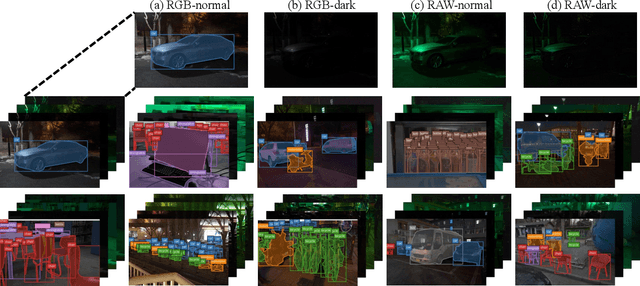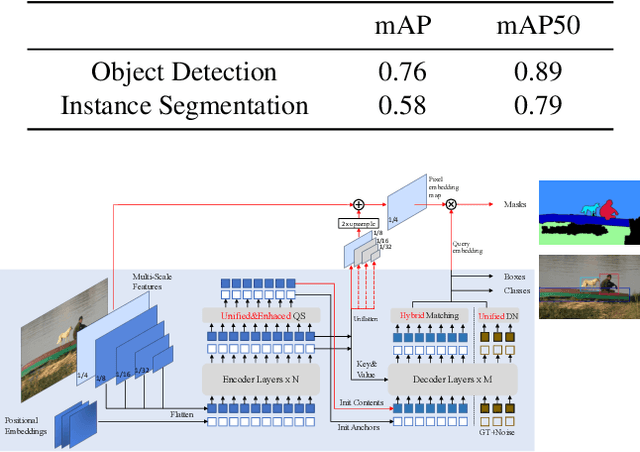Zichun Wang
Comparative Analysis of OpenAI GPT-4o and DeepSeek R1 for Scientific Text Categorization Using Prompt Engineering
Mar 03, 2025Abstract:This study examines how large language models categorize sentences from scientific papers using prompt engineering. We use two advanced web-based models, GPT-4o (by OpenAI) and DeepSeek R1, to classify sentences into predefined relationship categories. DeepSeek R1 has been tested on benchmark datasets in its technical report. However, its performance in scientific text categorization remains unexplored. To address this gap, we introduce a new evaluation method designed specifically for this task. We also compile a dataset of cleaned scientific papers from diverse domains. This dataset provides a platform for comparing the two models. Using this dataset, we analyze their effectiveness and consistency in categorization.
Technique Report of CVPR 2024 PBDL Challenges
Jun 15, 2024



Abstract:The intersection of physics-based vision and deep learning presents an exciting frontier for advancing computer vision technologies. By leveraging the principles of physics to inform and enhance deep learning models, we can develop more robust and accurate vision systems. Physics-based vision aims to invert the processes to recover scene properties such as shape, reflectance, light distribution, and medium properties from images. In recent years, deep learning has shown promising improvements for various vision tasks, and when combined with physics-based vision, these approaches can enhance the robustness and accuracy of vision systems. This technical report summarizes the outcomes of the Physics-Based Vision Meets Deep Learning (PBDL) 2024 challenge, held in CVPR 2024 workshop. The challenge consisted of eight tracks, focusing on Low-Light Enhancement and Detection as well as High Dynamic Range (HDR) Imaging. This report details the objectives, methodologies, and results of each track, highlighting the top-performing solutions and their innovative approaches.
Recurrent Self-Supervised Video Denoising with Denser Receptive Field
Aug 07, 2023Abstract:Self-supervised video denoising has seen decent progress through the use of blind spot networks. However, under their blind spot constraints, previous self-supervised video denoising methods suffer from significant information loss and texture destruction in either the whole reference frame or neighbor frames, due to their inadequate consideration of the receptive field. Moreover, the limited number of available neighbor frames in previous methods leads to the discarding of distant temporal information. Nonetheless, simply adopting existing recurrent frameworks does not work, since they easily break the constraints on the receptive field imposed by self-supervision. In this paper, we propose RDRF for self-supervised video denoising, which not only fully exploits both the reference and neighbor frames with a denser receptive field, but also better leverages the temporal information from both local and distant neighbor features. First, towards a comprehensive utilization of information from both reference and neighbor frames, RDRF realizes a denser receptive field by taking more neighbor pixels along the spatial and temporal dimensions. Second, it features a self-supervised recurrent video denoising framework, which concurrently integrates distant and near-neighbor temporal features. This enables long-term bidirectional information aggregation, while mitigating error accumulation in the plain recurrent framework. Our method exhibits superior performance on both synthetic and real video denoising datasets. Codes will be available at https://github.com/Wang-XIaoDingdd/RDRF.
LG-BPN: Local and Global Blind-Patch Network for Self-Supervised Real-World Denoising
Apr 02, 2023Abstract:Despite the significant results on synthetic noise under simplified assumptions, most self-supervised denoising methods fail under real noise due to the strong spatial noise correlation, including the advanced self-supervised blind-spot networks (BSNs). For recent methods targeting real-world denoising, they either suffer from ignoring this spatial correlation, or are limited by the destruction of fine textures for under-considering the correlation. In this paper, we present a novel method called LG-BPN for self-supervised real-world denoising, which takes the spatial correlation statistic into our network design for local detail restoration, and also brings the long-range dependencies modeling ability to previously CNN-based BSN methods. First, based on the correlation statistic, we propose a densely-sampled patch-masked convolution module. By taking more neighbor pixels with low noise correlation into account, we enable a denser local receptive field, preserving more useful information for enhanced fine structure recovery. Second, we propose a dilated Transformer block to allow distant context exploitation in BSN. This global perception addresses the intrinsic deficiency of BSN, whose receptive field is constrained by the blind spot requirement, which can not be fully resolved by the previous CNN-based BSNs. These two designs enable LG-BPN to fully exploit both the detailed structure and the global interaction in a blind manner. Extensive results on real-world datasets demonstrate the superior performance of our method. https://github.com/Wang-XIaoDingdd/LGBPN
 Add to Chrome
Add to Chrome Add to Firefox
Add to Firefox Add to Edge
Add to Edge